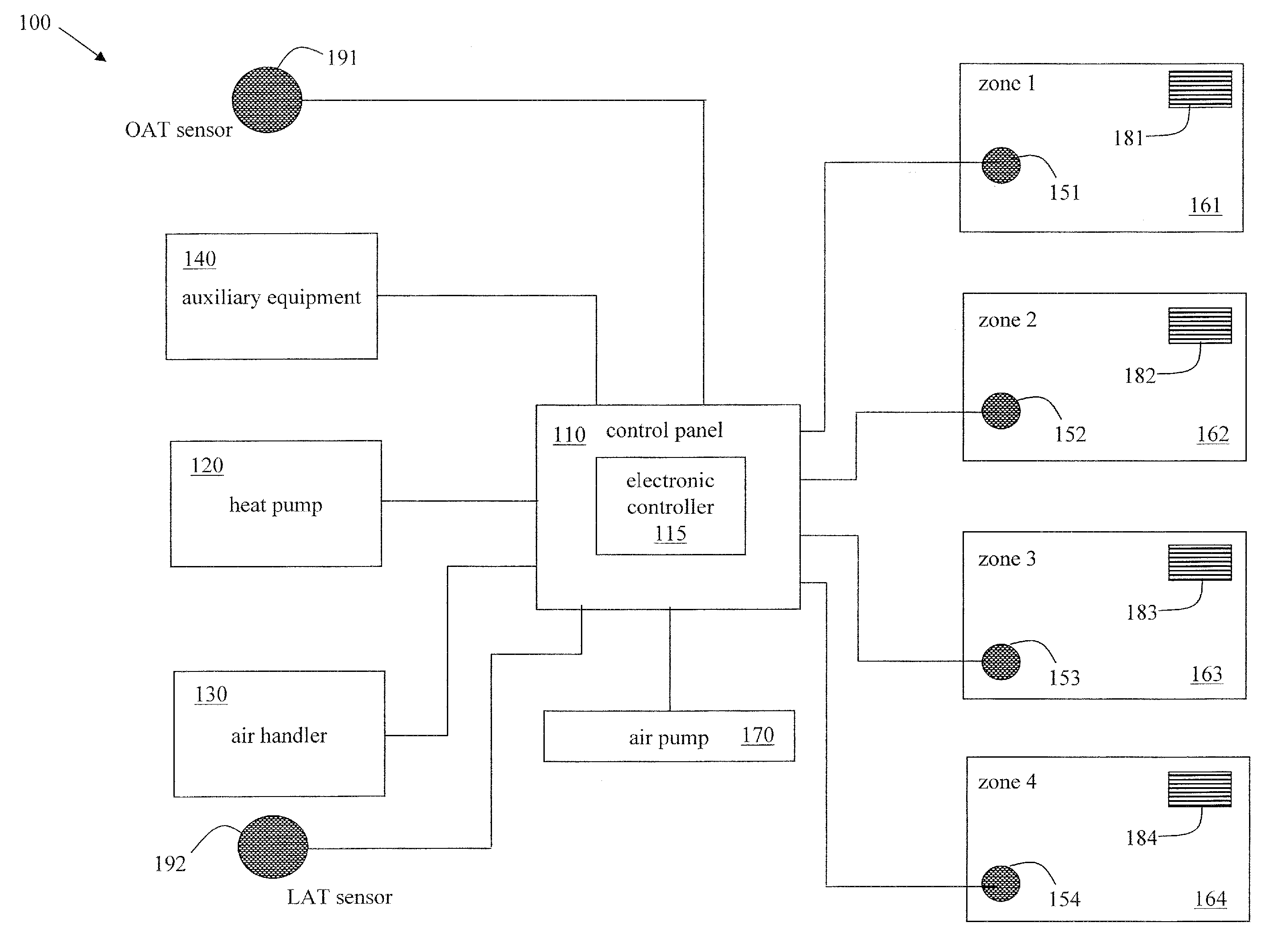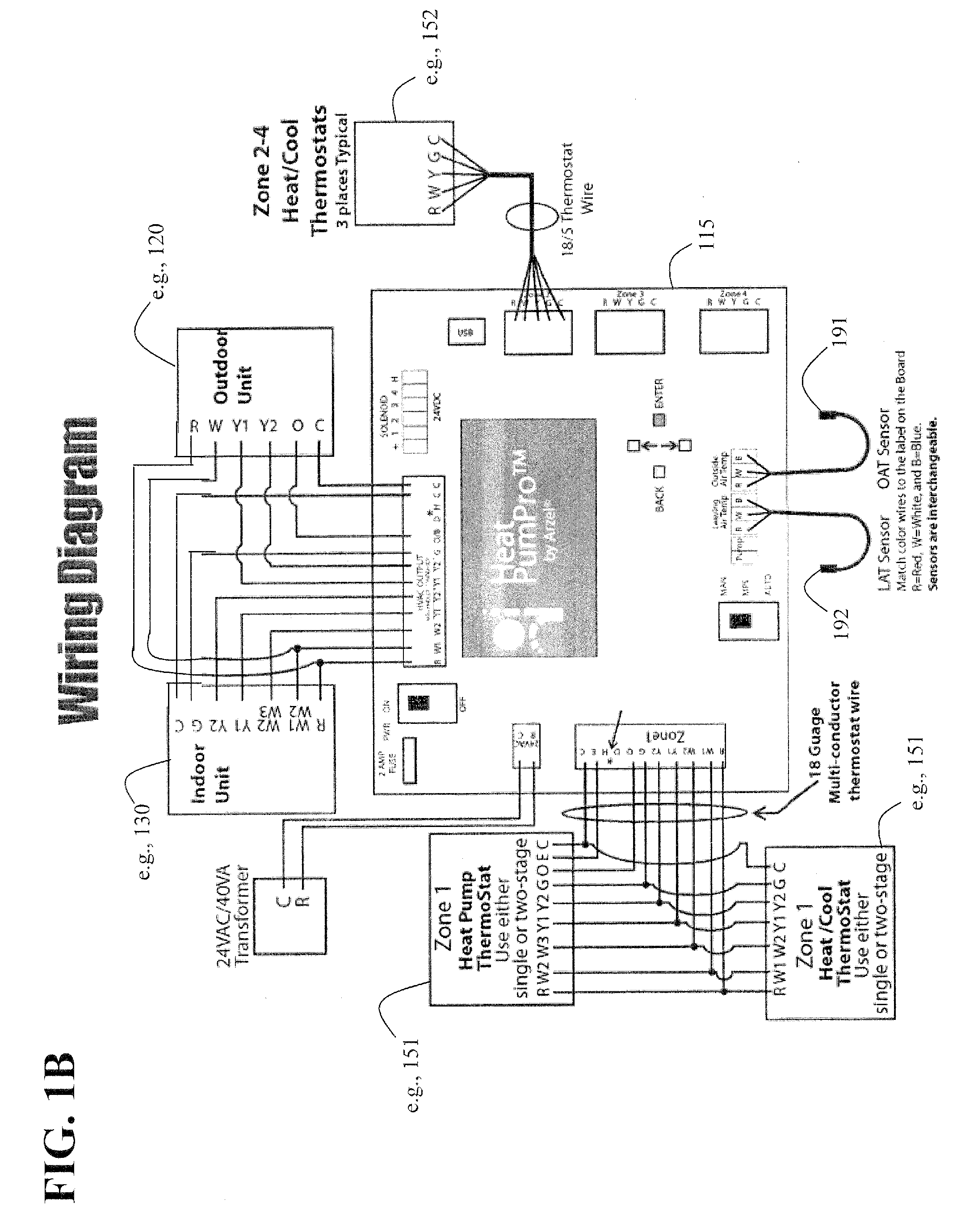System and method for heat pump oriented zone control
a technology of a heat pump and a zone control, which is applied in the direction of ventilation systems, heating types, instruments, etc., can solve the problems of insufficient temperature control in the various other regions of the building or home, the inability to provide adequate temperature control for individual rooms and areas, and the inability to adapt to the needs of the individual room or area, so as to achieve the optimal operation of heating and air conditioning equipment, the effect of increasing the capacity of the system
- Summary
- Abstract
- Description
- Claims
- Application Information
AI Technical Summary
Benefits of technology
Problems solved by technology
Method used
Image
Examples
Embodiment Construction
[0079] As used herein, the term “non-proprietary” means useable with any standard commercial forced air system (e.g., any standard commercial heat pump system). FIG. 1A illustrates a schematic block diagram of an exemplary embodiment of a system 100 to control environmental parameters of pre-defined zones within a first environment, in accordance with various aspects of the present invention. The system 100 includes a control panel 110, at the heart of the system 100, which includes an electronic controller 115. The system 100 further includes a heat pump 120 and an air handler 130 both operationally connected to the control panel 110 such that the operation of the heat pump 120 and the air handler 130 may be controlled by the electronic controller 115 of the control panel 110. The system 100 also includes auxiliary equipment 140 operationally connected to the control panel 110 such that the operation of the auxiliary equipment 140 may be controlled by the electronic controller 115 ...
PUM
 Login to View More
Login to View More Abstract
Description
Claims
Application Information
 Login to View More
Login to View More - R&D
- Intellectual Property
- Life Sciences
- Materials
- Tech Scout
- Unparalleled Data Quality
- Higher Quality Content
- 60% Fewer Hallucinations
Browse by: Latest US Patents, China's latest patents, Technical Efficacy Thesaurus, Application Domain, Technology Topic, Popular Technical Reports.
© 2025 PatSnap. All rights reserved.Legal|Privacy policy|Modern Slavery Act Transparency Statement|Sitemap|About US| Contact US: help@patsnap.com



